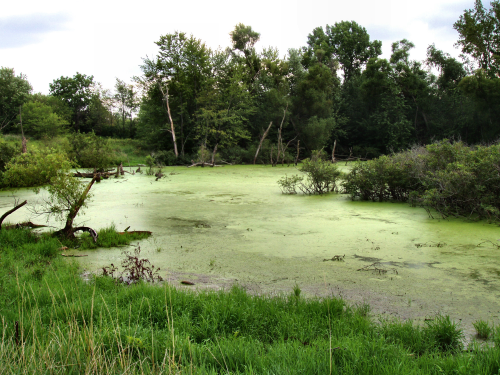Wetlands are a ubiquitous part of the southwestern Michigan landscape and provide numerous important ecological services. Wetlands allow water to slowly filter into the ground, which cleans water, provides a buffer against flooding, and re-charges groundwater supplies. They also provide habitat for many animal and plant species. Wetlands provide an opportunity for students to explore parts of the water cycle, food webs, and many other ecological processes. In this lesson, students learn about different types of wetlands and how they work through a series of presentations, games, and hands-on activities.
At the conclusion of the lesson, students will be able to:
- Understand how wetlands affect water, wildlife, and ecological processes
- Understand how wetlands help prevent pollution and erosion
- Recognize that wetlands are complex systems that support many different forms of life, from top-predators to microscopic organisms
Resources:
Lesson Plan created by GK-12 Fellows Amanda Charbonneau and Susan Magnoli, 2013

